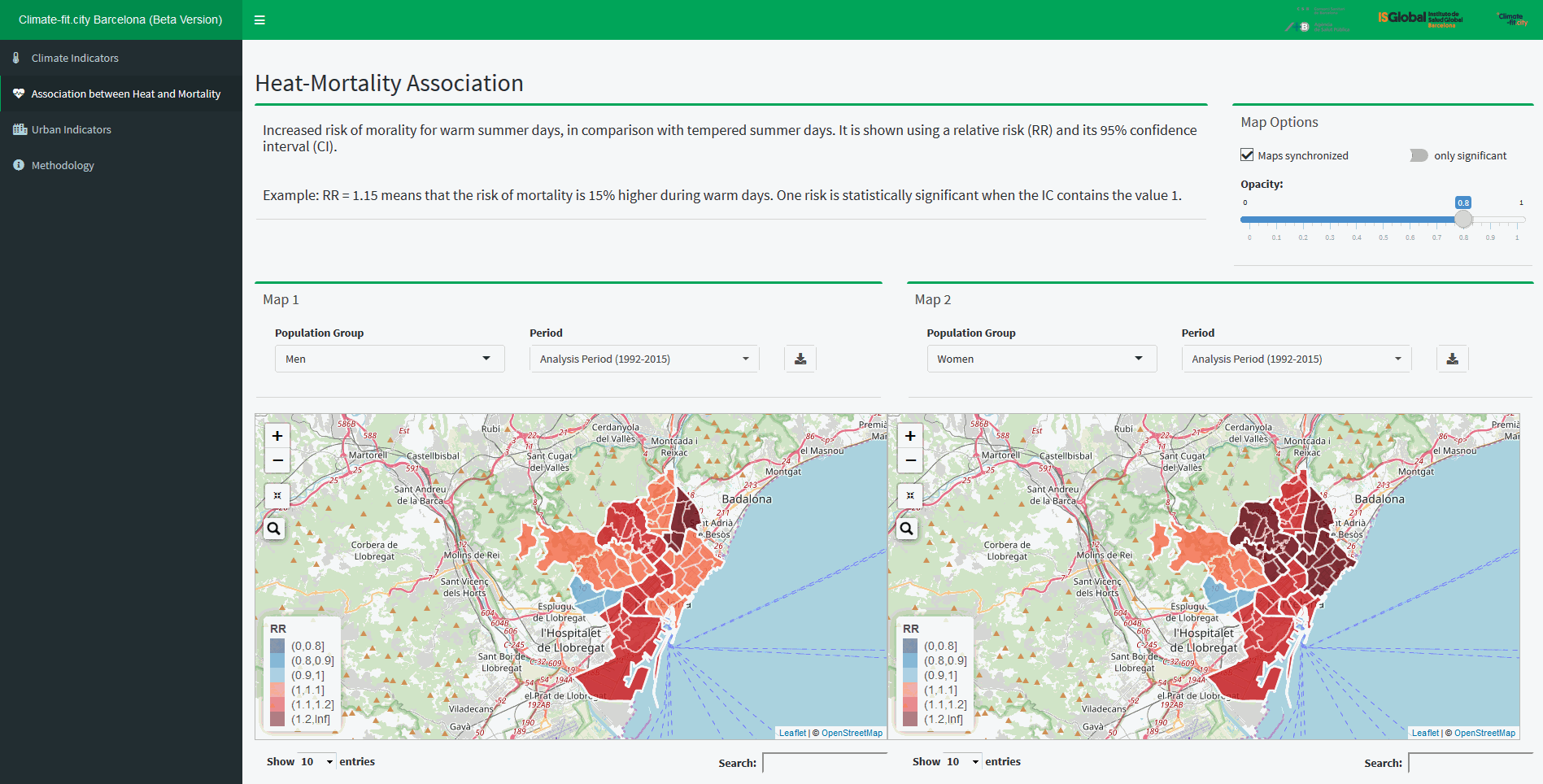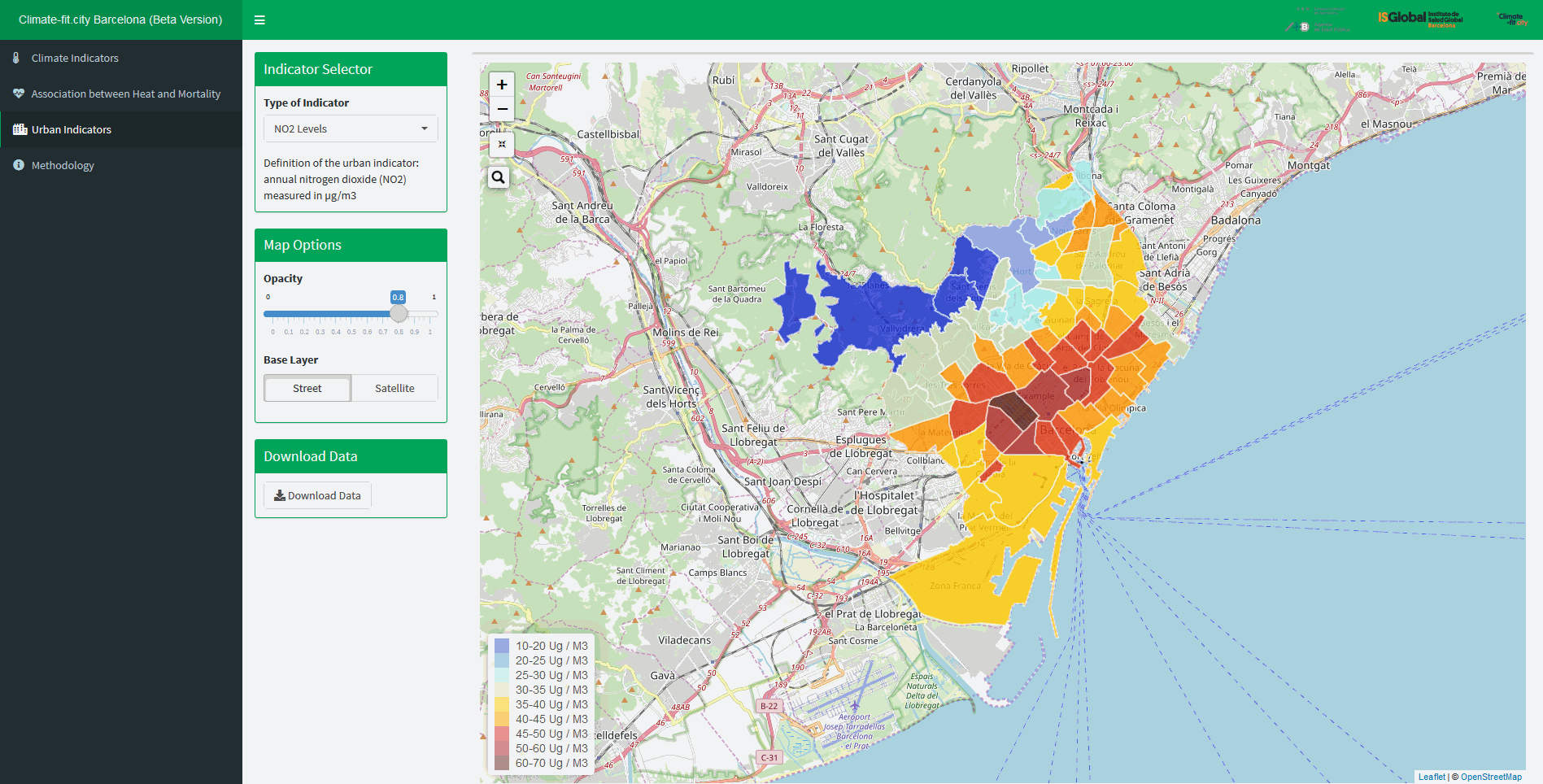Links
shinyapps.io : https://aspb.shinyapps.io/climate-fit-city-en/
RStudio Cloud: https://rstudio.cloud/project/257059
Purpose
This shinyapp is being developed as part of the Climate-fit.city project (H2020), which aims to demonstrate the added value of integrating urban climate services into user practices and develop a high-level climate service by translating the best available urban climate data into relevant information for users, both public and private, operating in the cities. Specifically, in the city of Barcelona, a climate service has been developed which its main objectives were (i) the description of the vulnerability to heat in different parts of the city, (ii) the analysis of inequalities and differences in the vulnerability associated with factors such as age, sex and education, (iii) the study of changes in vulnerability in recent decades, and (iv) the provision of information necessary for the development of future adaptation measures to high temperatures.
Features
The web is divided into three main sections:
- Climate indicators. It shows various climatic indicators of interest at a small scale (100m x 100m) from the climate model. Among others, basic temperature indicators (average, maximum, minimum temperatures, etc.), different percentiles of temperature, number of hot / torrid days and nights, and number of heat waves per year are shown. All of them are available for past periods of time and future climate change scenarios (RCP4.5 and RCP8.5).

- Heat-mortality association. Comparison of the risk of mortality between warm summer days compared to temperate days, through relative risk and confidence intervals. The results are represented at district level, and it allows to compare differences in vulnerability to temperature according to age, sex and educational level in different time periods.

- Urban indicators. Visualization of different urban indicators (from socioeconomic and physical context), mostly at neighborhood level, for which there is evidence that could produce a modifying effect on the relationship between the heat-mortality association.

App's authors
-
Marcos Quijal
-
Anna Deluca
-
Marc Marí Dell'Olmo